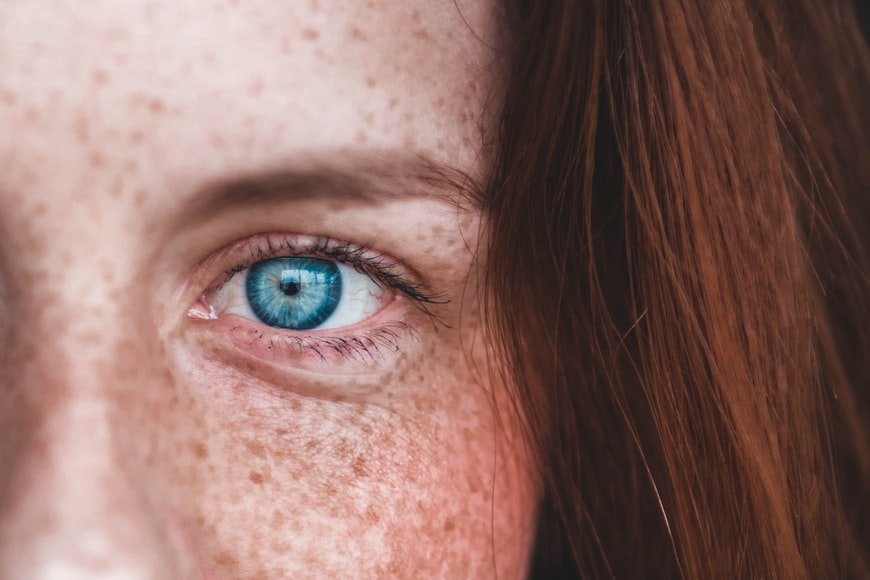Have you ever noticed small specks in the iris of your eyes (the colored part)? A new study published in the journal Investigative Ophthalmology & Visual Science sheds light on these so-called eye freckles and the reasons why some people have them while others do not.
The specks, which affect approximately 60% of the population, are clusters of abnormal melanocytes, or melanin-producing cells, that reside on the iris’s surface. Experts believe that, like freckles on the skin, they may develop as a result of sun exposure.

“In dermatology, the appearance of hyperpigmented spots—particularly in chronically sun-damaged skin—is associated with a high cumulative lifetime exposure to sunlight,” study author Christoph Schwab, MD, explained in an email to Health. “We believe that the pathway underlying the formation of iris freckles may be quite similar.”
Dr. Schwab, an ophthalmologist at the Medical University of Graz in Austria, investigated this theory by collaborating with other ophthalmologists and dermatologists to examine the skin and eyes of over 600 people. Additionally, the researchers gathered data on the participants’ history of sun exposure, including the number of sunburns they’d received and their use of sun protection.
Seventy-six percent of participants had at least one eye freckle, and the researchers discovered that these individuals shared a few other characteristics as well. They were typically older than those without eye freckles. Additionally, they were more likely to report a high number of sunburns over the course of their lives, as well as sun-damaged skin and age spots (aka sun spots, or actinic lentigines).
According to the researchers, these findings “appear to suggest that iris freckles are indicative of a high cumulative dose of lifetime sun exposure.”
Additionally, they noted that eye freckles were more prevalent in study participants than in the general population, possibly due to the fact that the participants were recruited from public swimming pools: They may have led more active lifestyles outdoors, exposing themselves to more UV light than the average person.
Dr. Schwab was most intrigued by the location of the majority of eye freckles: the lower, outer section of the iris. One possible explanation is that the brows and nose help shield the iris’s inner and upper quadrants, exposing the lower, outer sections to the sun’s rays.
While eye freckles are typically harmless, the researchers concluded that they may serve as a warning sign for sun-related health problems. “The presence of iris freckles also indicates that the skin has been exposed to the sun, which is a risk factor for several types of skin cancer. Within this context, there is undoubtedly a need for additional research into the relationship between skin cancer and iris freckles “They composed.
Additional research on iris specks may also aid physicians in understanding the role of sunlight in conditions such as macular degeneration and cataracts. “Investigating iris freckles in a variety of eye diseases may shed new light on their pathogenesis,” Dr. Schwab says.
For the time being, Dr. Schwab advises caution: “If someone has iris freckles, particularly at a young age, I would reconsider current sun protection strategies.” To keep your skin safe and your eyes freckle-free, remember to apply plenty of SPF (yes, even on cloudy days) and protect your eyes from the sun with sunglasses or a hat.

